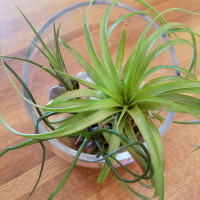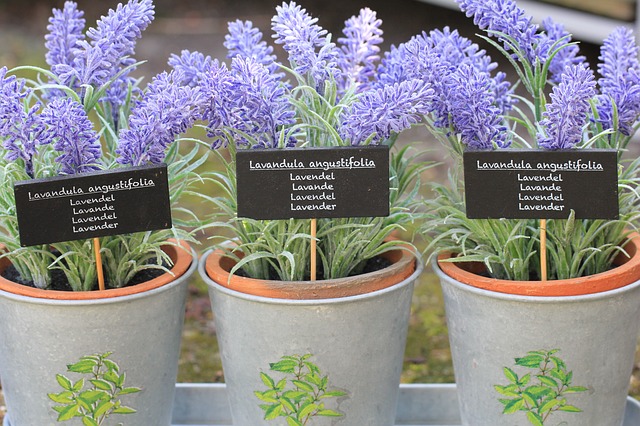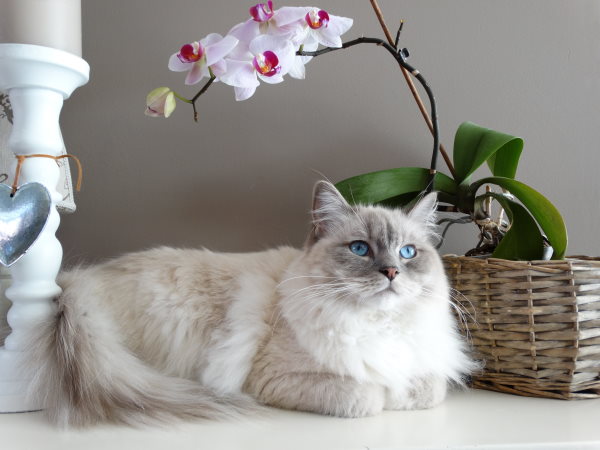Satin Pothos Care
Beautiful satiny gray-green leaves makes Satin Pothos one of my favorite house plants. Fortunately, it also happens to be easy to grow.
Here, you'll find out how to get the best leaf color, when to water, and why you want to prune those fast-growing stems.
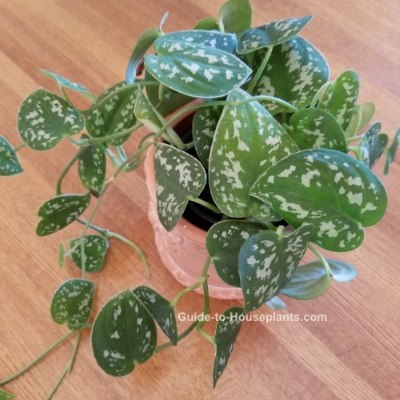 Long vines are densely covered with beautifully patterned leaves.
Long vines are densely covered with beautifully patterned leaves.Get to Know Satin Pothos Houseplant
This striking tropical plant is fairly new to house plant nurseries, and is garnering a lot of attention.
Big, heart-shaped leaves are dark-green and splashed with silvery gray, giving them a satin sheen. Its compact growth habit makes Scindapsus pictus 'Argyraeus' (shown above) a beautiful hanging basket plant.
Satin Pothos is just as easy to grow as its relative, golden pothos (Epipremnum aureum). Keep this Southeast Asia native warm and take care not to overwater this house plant. Cold drafts and soggy soil are two things it won't tolerate.
You'll see the best leaf color and variegation by keeping it in bright, indirect light. You'll also keep the plant healthy by boosting the humidity around it. In fact, its variegated foliage makes Satin Pothos a beautiful addition to a terrarium.
How big does Satin Pothos get? It trails to 3 ft (90 cm) or more. You can cut the stems back to any length, if you want a smaller houseplant. Pinching off the stem tips while the plant is still young will cause the stems to branch out, creating a fuller, bushier plant.
How to Propagate Satin Pothos Plant
When you prune Scindapsus pictus, don't toss out those cuttings. They're a cinch to propagate for more plants. Spring or early summer is the best time to propagate cuttings because this is their most vigorous time of growth. Here's how...
- Stem tips are easy to root. Take 4 inch (10 cm) tip cuttings with 2 leaves attached. Cut just above a node (the place where a leaf petiole is attached to the stem).
- Remove the bottom leaves so they won't rot beneath the potting mix.
- Insert cut stems an inch into moist peat moss based potting mix.
- Give stem tip cuttings the same warmth, indirect sunlight, and moist potting mix as the parent plant. Raising the humidity for the first week or so will help.
- Cuttings root easily in about a month.
Satin Pothos Problems, Solutions, and Special Helps
Prune it back. Your plant will benefit from occasional pruning, which helps it to branch out and become fuller. Spring is the best time to cut it back. Use sharp pruners to avoid tearing the stems.
Repot in spring when the plant outgrows its pot. Use a pot only 1-2 inches bigger, because a much larger container will hold too much water. It's a good idea to use a pot with drainage holes to prevent soggy soil. If you want to use a cachepot (decorative container without drainage holes), slip a plain nursery pot in the cachepot. I put pebbles in the bottom of my cachepots to keep the inner pot above the drainage water.
Long spaces between leaves are caused by too little light. Move your houseplant to a bright spot, but out of direct sunlight. Satin Pothos responds well to artificial light.
Satin pothos problems usually show in its leaves. Brown leaf tips that are crispy or curled under are caused by dry air. Yellow leaves are a symptom of too much water.
Brown spots surrounded by yellow halos indicate bacterial leaf spot. Cut off affected leaves. Take care not to get the leaves wet when watering.
Watch for pests. Check your houseplant regularly for aphids. These tiny pests will suck sap from soft stems and leaves of plants, making them distorted. Isolate an infested houseplant and treat it right away.
Scindapsus pictus is toxic to cats and dogs. According to the ASPCA, it contains insoluble calcium oxalates, which causes pain and swelling of the mouth, and difficulty swallowing.
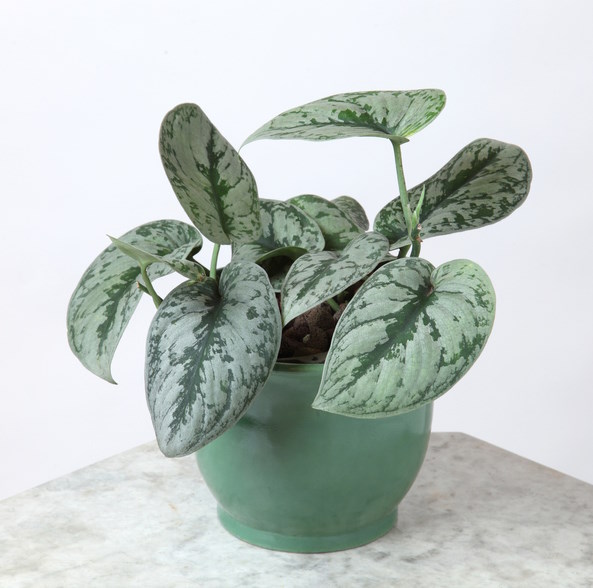 Scindapsus pictus 'Exotica' is a spectacular cultivar. Image credit istock
Scindapsus pictus 'Exotica' is a spectacular cultivar. Image credit istockSatin Pothos Care
Light: Give Scindapsus pictus bright, indirect light year-round. Harsh direct sunlight will scorch its leaves, while too-little light will cause the leaves to lose their variegation.
Water: Water thoroughly and allow the top inch of soil to dry out between waterings. Keep soil barely moist in winter. Yellow leaves are a symptom of overwatering. Always use room-temperature water when watering houseplants an provide good drainage.
Humidity: Try to maintain 40-50% relative humidity around your plant. Use a cool-mist room humidifier or a humidity tray in winter, if the air is dry.
Temperature: Average to warm 65-85°F/18-29°C. Don't expose Satin Pothos to temperatures below 60°F/16°C, even for a short time because cold air will damage the foliage of this tropical plant.
Soil: Use all-purpose houseplant potting mix.
Fertilizer: Feed monthly spring through fall with a 20-10-10 water-soluble fertilizer diluted by half.

